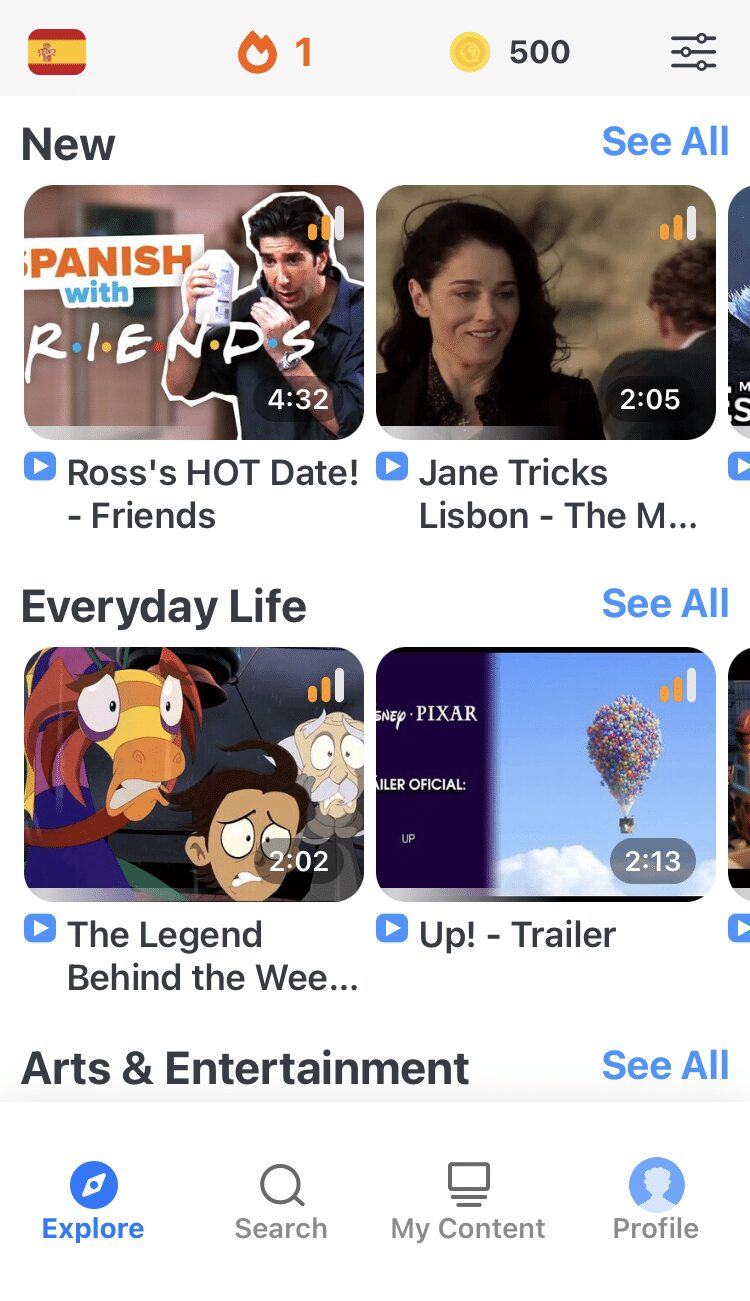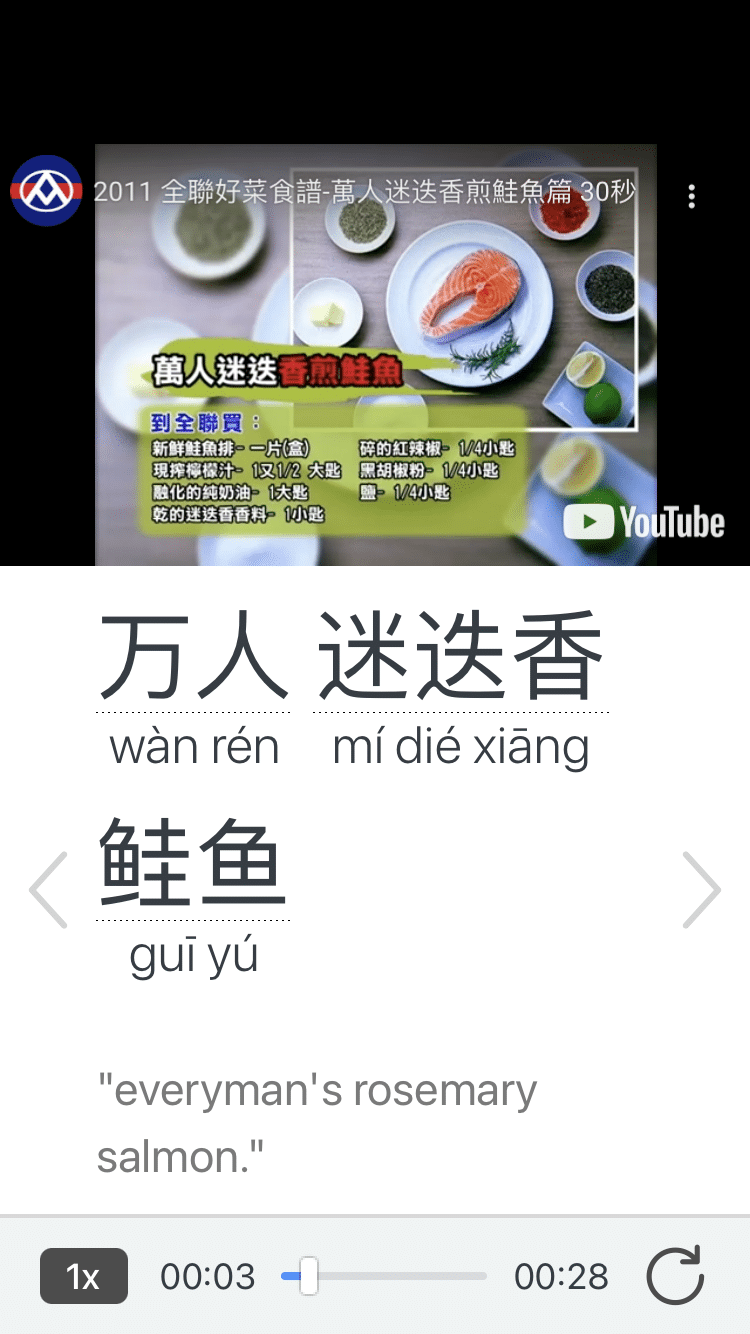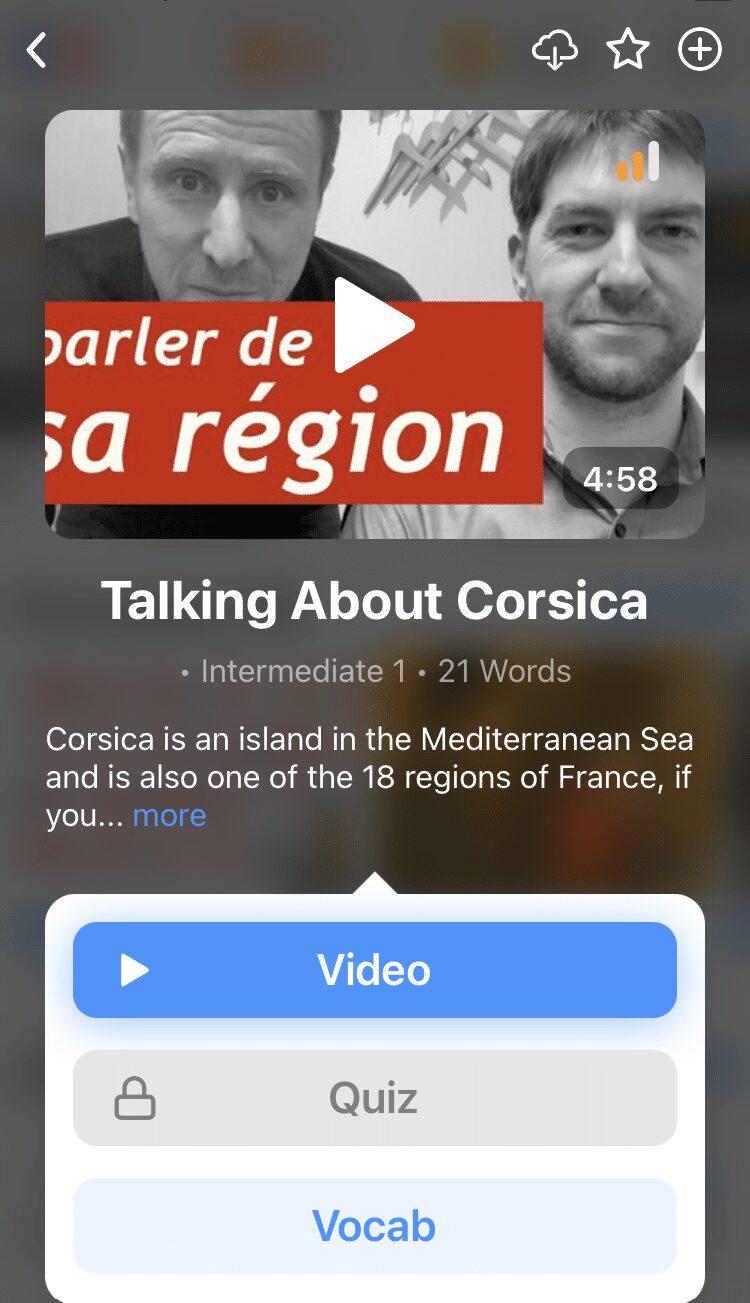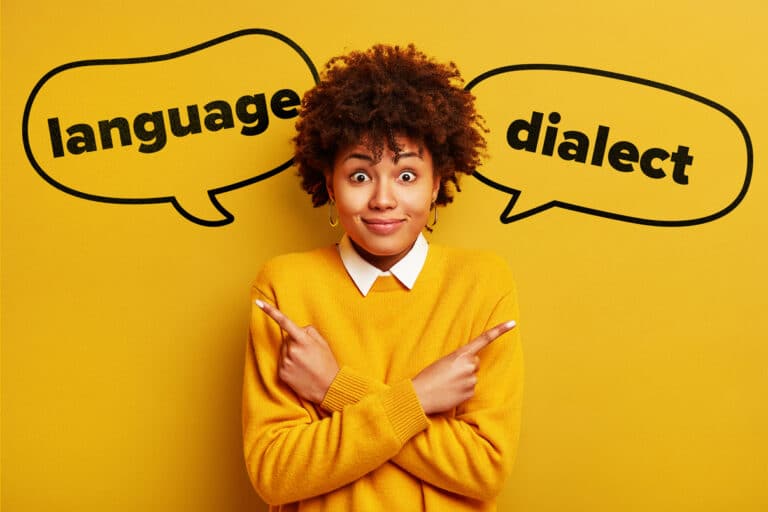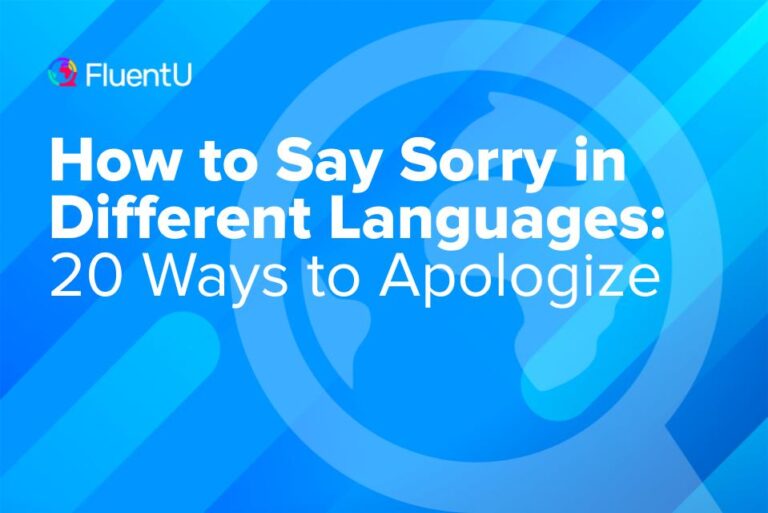How Many Words to Be Fluent in Another Language?

We’re often told we need 10,000 words to be fluent in another language, but amassing a huge vocabulary shouldn’t be your main goal when learning another language. For example, the difference between 1,000 words and 5,000 is a small one if those extra 4,000 are just different versions of the first thousand, if they’re words you’ll rarely get to use, or if you don’t really know how to use them.
Before you can wrap your head around the difference between 1,000 words and 5,000, you’ll need to think about what a “word” is. And the answer depends on who you ask.
Download: This blog post is available as a convenient and portable PDF that you can take anywhere. Click here to get a copy. (Download)
How Many Words Do I Need to Be Fluent in a Language?
A quick search for how many words are known by the average native English speaker can give you results that vary widely. One source will claim that highly-educated native speakers have a vocabulary of around 10,000 words, while another says that an ordinary speaker who has finished high school knows 35,000 “easily.” It’s not because these studies are fudging their numbers, but rather what they’re measuring is just different.
But here are the rough estimates, which we’ll dive deeper into later.
- Functional beginner: 250-500 words
- Conversational: 1,000-3,000 words
- Advanced: 4,000-10,000 words
- Fluent: 10,000+ words
- Native: 10,000-30,000+ words
What counts as a “word”?
Some word counts count every form of a word. For example, from the verb “to run,” we get “run,” “runs,” “ran,” “running” and many more. By some counts, these would all count as individual words, all with slightly different meanings related to person, number and tense.
Other counts only look at headwords or word families, the forms by which most words are listed in the dictionary and the root word from which all other forms are derived. When counting this way, “house” and “houses” would be two forms of the same headword, “house.” The same would be true of “am,” “is,” “was” and “be,” all forms of the headword “to be.”
Taking the latter approach to counting up our vocabulary, you can think of a verb like “to run” as a “word” that you’ve learned, and your ability to conjugate it to “the dog runs” would count as grammatical knowledge, rather than an entirely new word.
This second way of thinking closely mirrors organic language learning, in which we learn one form of a word and, as we learn more about the language and its structures, we’re able to generalize it and apply it to other situations. The grammatical understanding you acquire over time allows you to make the word plural, past tense, future tense or a direct object.
Perhaps you can already see the gulf of grey area between these two approaches.
For instance, if “run” and “ran” count as one word, what about the verb “to run” in the sense of “to manage” or the noun form, as in “a quick run to the store”? Where do we draw the line between one cluster of meanings and the next?
When attempting to count words, it’s important to adopt a consistent standard (what you’re counting and how you’re distinguishing one word from another). It’s also important to remember that, at the end of the day, it’s all a bit arbitrary.
The difference between active and passive vocabulary
Another complication is defining words we “know.” Do you “know” a word if you sort of mostly understand it when you hear it, but are unable to recall it and use it during conversation?
This is the distinction between active and passive vocabulary.
Active vocabulary is vocabulary that you can quickly remember and actively use when writing, speaking and thinking.
Passive vocabulary is vocabulary that you’re passively able to understand when you see it or hear it, but that you can’t use—or that you’re unsure of how to use—when writing, speaking and thinking.
Generally speaking, new words will first be gradually absorbed into your passive vocabulary as you encounter them several times and start to get a feel for their use.
Then, once you’ve gained enough context clues, and once you’ve heard and read enough of a word’s different meanings and usages to have a more exact idea of what it means and how it’s used, it’ll move over into your active vocabulary.
Native speakers and second language speakers generally have a passive vocabulary that’s larger than their active vocabulary. For learners, upgrading our passive vocabulary to the active category is one of the best ways to expand our knowledge of the language we’re learning.
How many words you need for different levels of fluency
For the sake of this post, let’s say that our vocabulary counts are using headwords and word families that are included in our active vocabulary.
So, we’re not counting all the various forms of a given word, and we’re not counting anything that’s only in our passive vocabulary. When we narrow our perspective down like this, we can start making approximations.
In general, we can describe levels of fluency in a foreign language with these rough word counts:
- Functional beginner: 250-500 words. After just a week or so of learning, you’ll already have most of the tools to start having basic, everyday conversations. In most of the world’s languages, 500 words will be more than enough to get you through any tourist situations and everyday introductions.
- Conversational: 1,000-3,000 words. With around 1,000 words in most languages, you’ll be able to ask people how they’re doing, tell them about your day and navigate everyday life situations like shopping and public transit.
- Advanced: 4,000-10,000 words. As you grow past the 3,000 word mark or so in most languages, you’re moving beyond the words that make up everyday conversation and into specialized vocabulary for talking about your professional field, news and current events, opinions and more complex, abstract verbal feats. At this point, you should be able to reach C2 level in the Common European Framework for Reference (CEFR) in most languages.
- Fluent: 10,000+ words. At around 10,000 words in many languages, you’ve reached a near-native level of vocabulary, with the requisite words for talking about nearly any topic in detail. Furthermore, you recognize enough words in every utterance that you usually understand the unfamiliar ones from context.
- Native: 10,000-30,000+ words. Total word counts vary widely between world languages, making it difficult to say how many words native speakers know in general. As we discussed above, estimates of how many words are known by the average native English speaker vary from 10,000 to 65,000+.
Of course, you’ll need to keep in mind that different languages have different amounts of words, and thus vocabulary quantities at different skill levels can vary considerably.
How to Learn the Right Words in Your Target Language
There’s definitely a way to learn the right words in the right order when learning a language.
Don’t set out to learn as many words as you can as quickly as possible, but instead set out to learn the words that offer you the most benefit.
Which words do I need to learn?
A good starting point in any language is a list of high frequency vocabulary, or a handy base vocabulary list for any language.
In English, for example, 3000 words make up about 95% of everyday conversation—you’ll want to be sure you can recognize words like “the,” “is” and “goes” before you concern yourself with learning the names of plants and animals or today’s slang.
In any language, there are a few categories of words that will come in handy before others. Some of your first linguistic building blocks will be personal pronouns (I, she, your) and basic verbs, which normally include words like “to be,” “to have,” “to go” and “to do.” Once you learn six personal pronouns and just these four verbs, you’ll already have a bunch of useful words in your linguistic arsenal!
With these basic tools in hand, you’ll move on to everyday concrete nouns like words about people (boy, family, hand) and household objects (table, window, refrigerator) to basic descriptors, conjunctions, demonstratives and so forth until your vocabulary numbers in the thousands of words.
Tips for strengthening your passive vocabulary
As earlier mentioned, most words won’t be added directly to your active vocabulary the first time you’re exposed to them.
To learn more words in a language, you’ll need to saturate your passive vocabulary with new information constantly. That means exposing yourself to linguistic input like TV, videos and reading material, as well as plenty of real-life conversation.
Beginning learners, don’t fret over not understanding all the new words you expose yourself to every day. Every new word starts as an unfamiliar word, and repeated exposure is the only way to truly learn (rather than memorize) unfamiliar vocabulary.
Tips for strengthening passive vocabulary:
- Watching children’s shows: TV shows for small children speak in a slow, articulate manner with a simple vocabulary and lots of context clues. This week’s episode about colors might not be as exciting as “Game of Thrones,” but it’ll help you expose your brain to the new vocabulary in context, just like children do.
- Reading children’s books in translation: “Green Eggs and Ham” only used fifty words in the whole book. Hunt down some Dr. Seuss or other familiar children’s classics and learn new words easily by reading these, as the vocabulary is simple and you’ll already be familiar with the context.
- Watching Disney or other animated films: Watching a movie you’ve already seen a hundred times (but doing it in your target language) works on the same principle as reading familiar children’s stories. The vocabulary is simple, and you already know the story so well that you’ll understand much of what you hear without ever needing to open a dictionary.
- Learning vocabulary with authentic videos: When you expose yourself to media from real native English speakers, you give your mind a chance to hear the natural sounds of your target language. Listen passively to reinforce known vocabulary and grammar, or watch actively to discover new words in context and pick up vocabulary like slang and filler words that you might not learn from a more traditional approach.
Kick your vocabulary acquisition up a notch with the FluentU language learning platform.
FluentU takes authentic videos—like music videos, movie trailers, news and inspiring talks—and turns them into personalized language learning lessons.
You can try FluentU for free for 2 weeks. Check out the website or download the iOS app or Android app.
P.S. Click here to take advantage of our current sale! (Expires at the end of this month.)
- Watching documentaries and educational programs: Learning a language with TV is one of the best ways to build vocabulary, and documentaries and educational programs in particular often (1) speak slowly and articulately, and (2) speak about something you see visually on the screen, making for a natural language learning setting in which you can start making connections between the words you hear and the images you see.
- Reading public signs, menus, etc.: “Stop,” “exit” and “emergency” are all words you can learn quickly by taking a stroll through nearly any town in the world and looking around.
- Wikipedia pages on familiar topics: Once you’ve moved beyond Dr. Seuss, try pulling up your professional field or favorite pastime on Wikipedia and finding the version in your target language on the left-hand menu. Once again, your familiarity with the subject should allow you to recognize and passively understand new words easily.
- Flashcards and flashcard apps: It’s old-fashioned, but spaced repetition works. The tighter you tie new words to real-life images, the firmer they stick in your passive vocabulary, and the riper they are for promoting to active vocabulary.
Tips for strengthening your active vocabulary
Promoting passive vocabulary to active vocabulary is a question of use-it-or-lose-it.
Once you’ve gotten acquainted with a new word and seen its different sides, it’s time to embark on the anxiety-inducing path of trying it out and using it yourself.
Here are some handy ways to go from passive understanding to active use:
- Translating children’s books: Translating children’s books is one of the easiest ways to start using your new vocabulary. Pick a familiar book (maybe the same one you read in your target language to help gain more passive vocabulary), and translate it into the language you’re learning.
- Practicing new vocabulary in FluentU’s learn mode: With FluentU, once you’ve had a chance to wrap your head around a new word in context, learn mode or quiz mode gives you a chance to put it to work by using it actively.
- Vocabulary games: Engaging your new vocabulary to accomplish a task is not only good for long-term retention, it’s also fun!
- Online or in-person language exchange: It doesn’t get better than actual conversation. Check out some apps and sites for language exchange, or look around sites like Couchsurfing and Meetup for local language exchange events you can attend in person.
- Writing in your target language: Keep a diary just for you, and don’t worry about correctness or spelling—just use your words! You can also chat with friends on social media or use sites like HiNative to have native speakers check over your writing.
- Talking to yourself: Sometimes you’re your own best conversation partner. Find some quiet time to read or watch some target language material and talk out your understanding of new words you hear, playing around with it until you think you’ve got it right. You can also record yourself and listen back to what you said.
- Taking a course: If you need a more structured way to learn, you can take a course to help you along. For a very friendly and approachable course, check out polyglot Olly Richards’ courses, which is designed to help you set up workable, step-by-step systems for learning your target language and picking up useful new vocabulary.
Whether you’re an absolute beginner or an intermediate learner reaching for loftier linguistic goals, let the size of your vocabulary be a barometer for your progress rather than a goal in itself.
As you build your house of words and lay your bricks, remember that the foundation is all you need to get started, that syntactical scaffolding will support it, grammar will mortar it together, and social meaning and pragmatics seal off the roof.
And to build up that critical vocabulary, take a cue from the owl in the Tootsie Pop commercial.
Just bite into your language and start chewing!
Download: This blog post is available as a convenient and portable PDF that you can take anywhere. Click here to get a copy. (Download)
And One More Thing...
If you dig the idea of learning on your own time from the comfort of your smart device with real-life authentic language content, you'll love using FluentU.
With FluentU, you'll learn real languages—as they're spoken by native speakers. FluentU has a wide variety of videos as you can see here:
With FluentU's Chrome extension, you can bring interactive learning tools directly to YouTube or Netflix, and even import your favorite YouTube videos directly into your FluentU account.
FluentU has interactive captions that let you tap on any word to see an image, definition, audio and useful examples. Now native language content is within reach with interactive transcripts.
Didn't catch something? Go back and listen again. Missed a word? Hover your mouse over the subtitles to instantly view definitions.
You can learn all the vocabulary in any video with FluentU's "learn mode." Swipe left or right to see more examples for the word you’re learning.
And FluentU always keeps track of vocabulary that you’re learning. It gives you extra practice with difficult words—and reminds you when it’s time to review what you’ve learned. You get a truly personalized experience.
Start using the FluentU website on your computer or tablet or, better yet, download the FluentU app from the iTunes or Google Play store. Click here to take advantage of our current sale! (Expires at the end of this month.)

